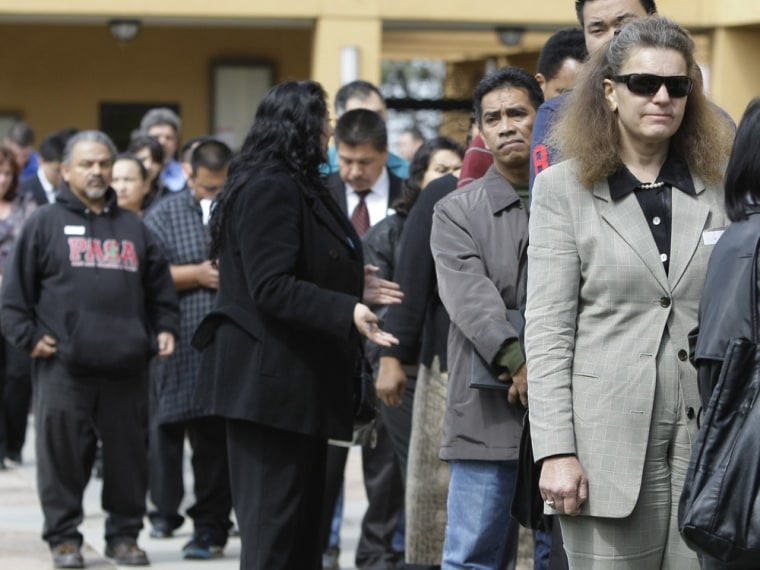Fewer Americans applied for unemployment benefits last week, a sign that layoffs are dropping and companies may be stepping up hiring.
The Labor Department said Thursday that the number of people seeking benefits dipped by 6,000 to a seasonally adjusted 388,000 for the week that ended March 26. That's the second decline in three weeks.
Applications near 375,000 or below are consistent with a sustained increase in hiring. Applications peaked during the recession at 659,000.
The four-week average of applications, a less volatile measure, rose to 394,250. Still, that figure has dropped by 35,500, or 8 percent, in the past eight weeks.
"The downtrend ... is undeniable," Joshua Shapiro, chief economist at MFR Financial Inc., said. "We believe that this improvement will continue in the weeks and months ahead."
The department also revised the previous five years of data. The changes showed that applications in recent weeks were moderately higher than previously reported.
As applications have fallen, hiring has started to pick up. Economists forecast that employers added a net total of 185,000 jobs in March. That would be just below February's gain of 192,000 — the most jobs added in nearly a year. The unemployment rate is expected to remain unchanged at 8.9 percent.
The March data will be released Friday.
Still, hiring must rise by about 300,000 per month to rapidly bring down the unemployment rate, economists say. The economy has gained more than a million jobs in the past year but still has 7.5 million fewer jobs than before the recession.
The number of people collecting benefits also dropped. It fell by 51,000 to 3.7 million in the week ending March 19, the latest data available. That's the lowest figure since October 2008. But that doesn't include millions of people receiving aid under the emergency unemployment benefit programs put in place during the recession.
All told, 8.8 million people received unemployment benefits in the week ending March 12, the latest data available. That's slightly higher than the previous week.
There have been other positive reports about jobs and hiring this week.
More than half of the largest U.S. companies plan to step up hiring in the next six months, according to a survey by the Business Roundtable, released Wednesday. That's the highest proportion of the group's members that plan to add workers since the quarterly survey began in 2002. The Roundtable represents the CEOs of roughly 200 of the largest U.S. companies.
And the Conference Board said more job openings were posted online in March. The number of postings rose by 208,800, or nearly 5 percent, to 4.45 million. Job openings have increased by 600,000 in the first three months of this year. The Conference Board is a nonprofit business research group.
Meanwhile, U.S. factories orders fell in February, as the government cut demand for military planes and communications equipment while businesses bought fewer computers, turbines and power generators.
Orders to U.S. factories slipped 0.1 percent in February after three straight monthly gains, the Commerce Department reported Thursday.
When excluding transportation, orders rose 0.1 percent. That's the seventh straight increase for that category. Still, a key measure of what businesses spent on capital goods fell for the second straight month.
Even with the decline, factory orders totaled $446 billion last month. That's a level economists view as healthy and it is 26.4 percent above the recession low hit in March 2009.
